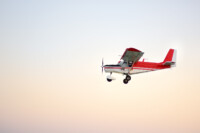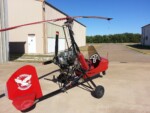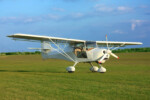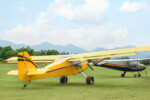Can I Build My Own Ultralight Airplane?
13 March 2023 | Updated on February 05, 2024
Why build an airplane? This is a common question people who build ultralight vehicles for recreational flying tend to get from curious neighbors and friends. Aviation enthusiasts have built custom airplanes since the Wright brothers made the first powered flight. The Federal Aviation Authority (FAA) has licensed over thirty-two thousand amateur-built aircraft.
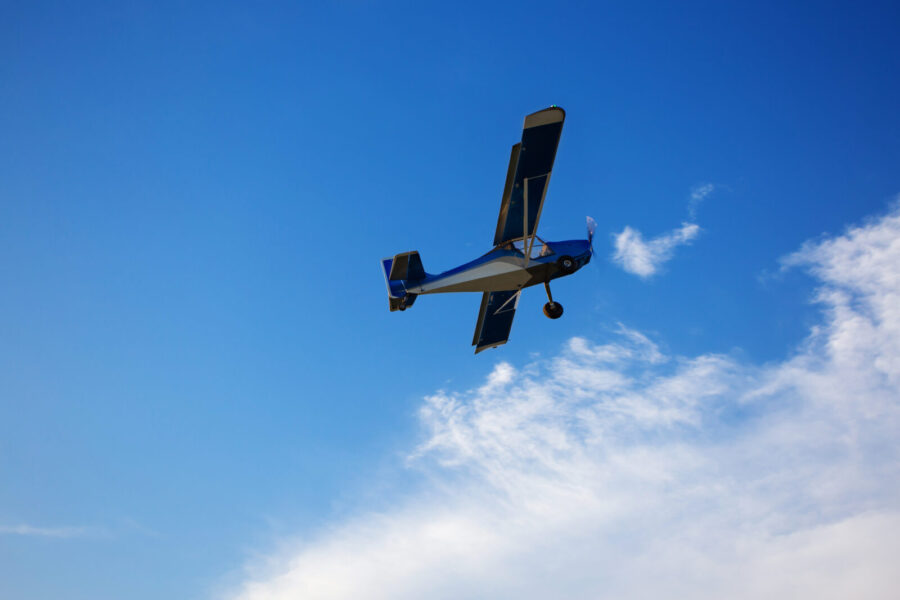
Ultralights are simple and cheap, and several ultralight flying clubs consist of enthusiasts who share a similar love for the aircraft. Most ultralights are available from the factory in pre-assembled kits; anyone can assemble them in a few hours. Early ultralights were foot-launched hang gliders with tiny engines, and many enthusiasts experimented with new designs, materials, and powerplants for improved performance and safety.
Very few aircraft provide a similar sensation of floating in the air like an ultralight. But you must build one to experience it. Our guide to building your ultralight answers questions on the best type of ultralight to build, how the process goes, the materials used for building, and the costs of building ultralight aircraft.
What is an ultralight?
Ultralights are small, slow-stalling, lightweight single or two-seat fixed-wing aircraft flown primarily for recreational purposes. Ultralight types consist of weight-shift control models and the conventional three-axis control versions.
You have a wide range of ultralight models to choose from should you decide to build an ultralight vehicle. These include:
- Lighter than air
- Powered parachute/paragliders
- Powered fixed wing
- Trike
- Rotorcraft
- Unpowered gliders and sailplanes (some of them)
In the United States, the Federal Aviation Authority (FAA) FAR (Part 103) governing the operation of ultralight vehicles requires a weight limit of 155 pounds (70.3 kg) for unpowered ultralight vehicles and 254 pounds (115.2 kg) for powered ultralight vehicles.
When building your ultralight vehicle, it is vital to adhere to Part 103 requirements, including the following:
- Has a single seat for flight operations;
- A fuel capacity not exceeding 5 U.S. gallons;
- Has a power-off stall speed not exceeding 24 knots (27.6 mph) calibrated airspeed.
The FAA does not consider an ultralight as an aircraft. However, the huge community of ultralight enthusiasts often refer to them as ‘sky bikes’ because it offers more fun and thrills than an airplane.
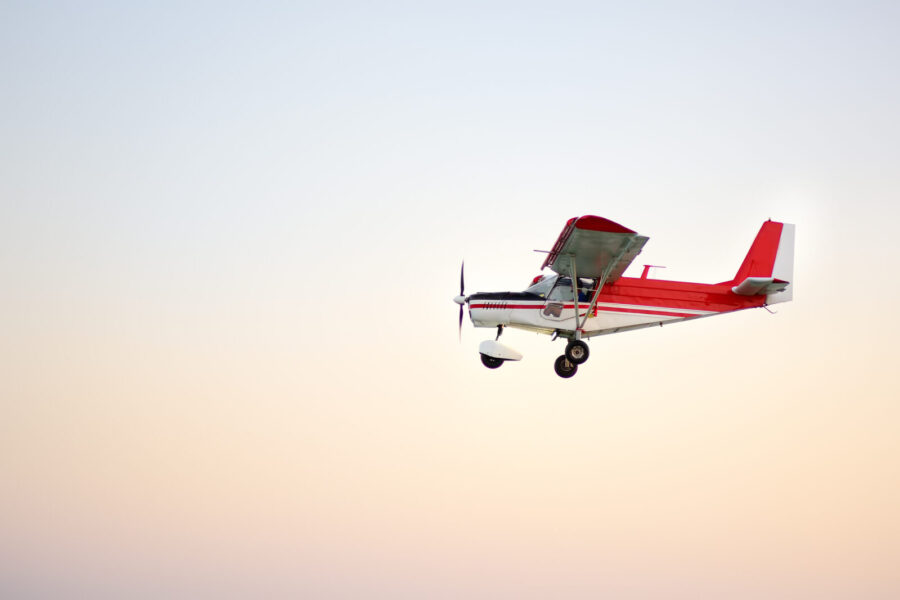

Should I build an ultralight?
Building your ultralight vehicle allows you to experience the pleasures of aircraft ownership at minimal costs and, at the same time, improve your knowledge of aerodynamics. Building your ultralight may seem daunting for beginners or individuals with a minuscule budget, but you can do it with the proper tools and motivation.
Building your ultralight can be a rewarding and exciting experience. Very few pleasures compare to what you get when flying an aircraft built from scratch by your hands.
We can think of several reasons why you should build an ultralight instead of buying one. Here are a few.:
- You save money by building your ultralight aircraft;
- You could decide to build a bigger and more advanced ultralight than you could afford to buy from a manufacturer;
- Building an ultralight gives you complete knowledge of how mechanical parts work, which can be lifesaving in an in-flight failure;
- Ultralights do not require an inspection by the FAA, meaning you can implement your custom designs (provided they are within regulations) and build a unique aircraft, unlike other mass-produced ultralights;
- It allows you to join and enjoy the company of ultralight enthusiasts with similar objectives.
How much does an ultralight cost to build?
Most ultralight builds are pre-assembled kits shipped by the manufacturer to the customer, who completes the final assembly according to specification. These builds can be pretty expensive, often costing several thousands of dollars. A small minority of ultralight builders eschew pre-assembled kits for homemade ultralights made from off-the-shelf or repurposed materials. Building a homemade ultralight can cost as little as a thousand dollars – without cutting corners. Ultimately, the aim is not just to have the cheapest ultralight attainable but to build a good, safe, and great-handling flying aircraft, irrespective of the costs.
Pre-assembled ultralight kit cost
Pre-assembled ultralights are available in a wide range of product models and designs. But your total costs depend on the type of engine you use. An inexpensive ultralight kit costs around $15,000, with the engine accounting for half the total cost. High-end ultralight kits can cost as much as $35,000. For example, if you buy a complete kit for $7,500, you will spend another $7,500 on the recommended engine for the ultralight.
Assembling an ultralight is a pretty much straightforward process. No extra costs are involved, and putting together the airframe steel tubing, including flight monitoring systems, is a breeze if you are handy with a wrench and screwdriver.
If you have a bigger budget, your engine choices could increase your pre-assembled ultralight kit costs. Manufacturers often use inexpensive (but capable of providing adequate thrust) engines for their ultralight kits. But you may need a more powerful engine for extra safety or thrills.
Homebuilt ultralight cost
You have few other choices besides a homebuilt ultralight if you are on a shoestring budget. Most DIY ultralight builds cost a few thousand dollars, typically between $3,000 – $6,000, with your biggest expense being the engine. However, there are some pretty awesome builds around $1,500 if you can improvise.
For example, some builders may repurpose engines from old lawnmowers and crashed snowmobiles. They can source aircraft tubing from local metal suppliers or scrapyards and make the ultralight fabric covering from discarded banners or tents. Apart from the several hundred man-hours required, a cheap homebuilt ultralight aircraft often require significant resources, including a workshop with the necessary CNC mills, tube benders, drilling jigs, lathes, welding equipment, painting tools, and other equipment to complete the build.
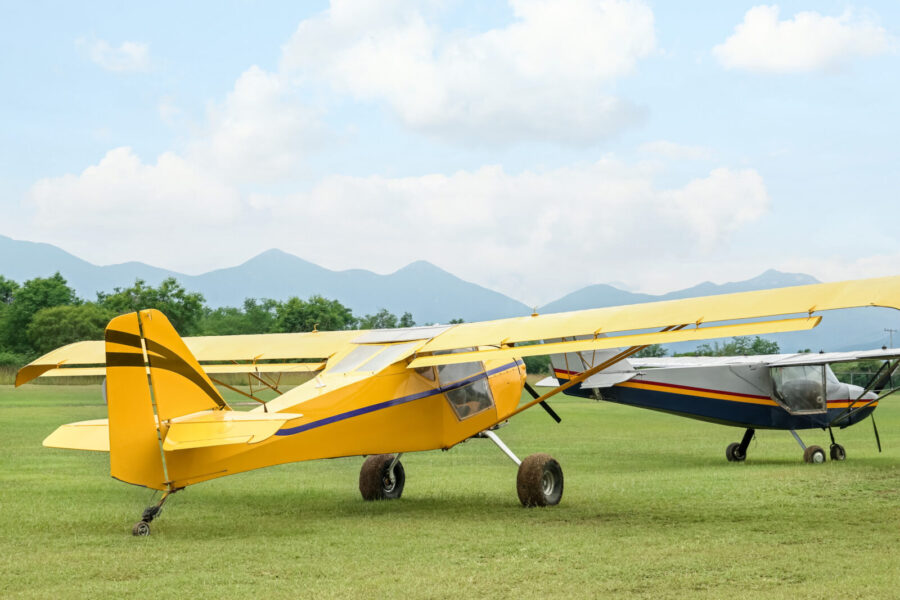



Learn more
How Much Does An Ultralight Cost?
What materials can I use to build an ultralight?
You can construct an ultralight from different materials, but the type of material you use will depend on the ultralight type and its purpose. These materials range from wood to composites and are commercially available from hardware stores or metal dealers. Ultralight materials perform various functions. For example, wood and metal are used in the airframe and wing construction, while fabric generally covers the airframe.
- Wood: early ultralights had a wooden airframe construction. Today people use wood for the smaller airframe components like wing spars and ribs.
- Aluminum: these are strong and lightweight metals commonly used in ultralight construction. Aluminum is anti-corrosive and can easily bend into different shapes during airframe construction.
- Fabric: you can use aircraft-grade polyester or nylon to cover your ultralight wings and airframe. A big advantage of using fabric in ultralight construction is they are lightweight and durable. Plus, you can easily remove or repair damaged fabric.
- Composites: although expensive, composites like fiberglass and carbon fiber are excellent alternatives to metal or wood when building an ultralight. Composites are lightweight and tough materials that are not susceptible to rust or rot, making them ideal for airframe construction. However, working with composites requires experience and special equipment. The high cost of replacing or repairing damaged composites is why they are not popular with budget-conscious ultralight builders.
- Technical diagram: you cannot build a safe ultralight with decent flight performance without detailed schematics or a blueprint. Every ultralight kit has a technical diagram for DIY assembly from the factory. These typically contain instructions on building an ultralight without violating FAA regulations, including the parts assembly sequence, bolt or fastener torque specifications, engine mounting instructions, and wiring diagrams.
- Hardware: consist of the materials you need to build an ultralight or the components required to complete an ultralight assembly. Hardware is not ultralight parts but the screws, bolts, rivets, and nuts you use to attach different ultralight parts like the wings and fuselage.
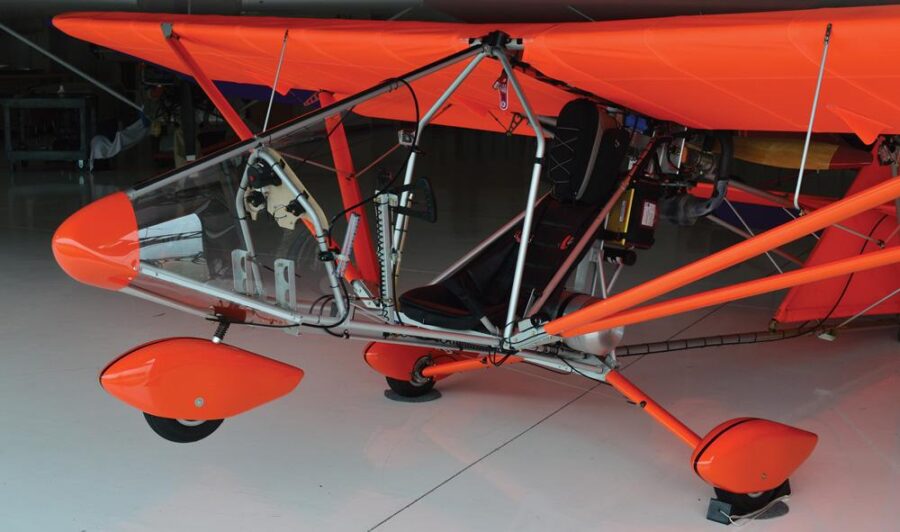

Hardware may also include additional tools and equipment you use during construction. These include:
- Screwdrivers
- Wrenches
- Sandpaper
- Tubing bender
- Rivet gun
- Belt sander
- Hand files
- Metal grinder
- Bench vice
- Drill press
- Paintbrush/spray gun
- Band saw
How can I build an ultralight?
Ultralight builders often describe the process as similar to building a huge Lego toy. However, you need information and the correct tools to construct an ultralight aircraft. Having tons of motivation also helps because people tend to become discouraged and abandon projects encountering problems. There are probably more unfurnished ultralight builds sitting in garages and basements across the country than completed ultralight aircraft flying.
An excellent idea is to join an ultralight club for ideas and meet people willing to provide ideas and labor during difficult times.
What is the procedure for building an ultralight? We have researched different approaches and found the best build process covering all construction stages.
- Decide on the type of ultralight that suits your needs. Several ultralight designs and models range from 3-axis control models to weight-shift control trikes. Your final choice will determine the build process.
- Whether buying a pre-assembled kit or building a custom ultralight, you must obtain and study technical blueprints and drawings of the ultralight. These may include wiring diagrams and true-to-scale computer-aided-design drawings. The manufacturer provides your ultralight blueprints (if you are building a pre-assembled unit) or online downloads of standard ultralight models.
- Get and read a copy of Federal Aviation Regulations FAR (Part 103) defining the specifications of an ultralight vehicle. By understanding Part 103 rules, you can build your ultralight according to the legal guidelines provided by the FAA without breaking the law.
- Prepare a secure and airy construction space to prevent materials theft and suffocation from the chemicals you use during the bonding process. Mark off the build spot and materials storage area, including your tools and equipment storage space. A dry garage or outdoor shed should be a perfect workspace.
- Arrange your tools and equipment around the workspace. Following workspace safety protocols to prevent injury from accidents is essential. It is also important to place frequently used tools in easy-to-reach locations and install bigger equipment further away from the build spot.
- To practice your skills, you may build a mockup using cardboard or cheap plywood. Although it may increase your overall costs, practicing with a mock build helps build confidence and provides an experience that comes in handy when installing critical parts like the wings and engine.
- Start the actual build in the following order:
-
- Build the frame.
- Build/ install the wings and tail sections.
- Build/install the undercarriage.
- Install the engine.
- Install the fuel tank and the fuel management, including the fuel lines.
- Install the flight controls, including the pulleys.
- Run the wiring to the engine, the start/stop button, the gauges, and the lights.
- Install the cockpit seat and (if any) windscreen or doors.
- Cover the fuselage with fabric or any other recommended or preferred material.
- Disassemble or tow the ultralight to an airfield for test flights.
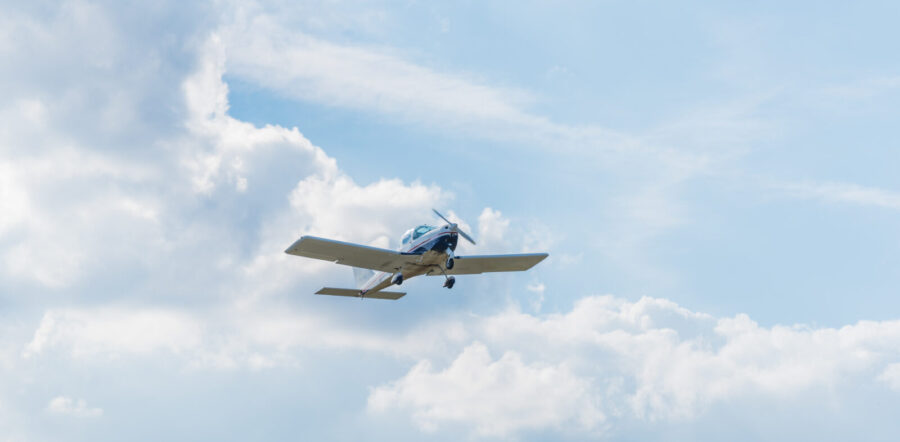

How long does it take to build an ultralight?
You will spend more time building your ultralight than flying it, but the joy of flying it is the reward for each hour you spend building. Ultralight owners often describe the process of building their ultralights as a destination and a journey. Building your dream ultralight requires lots of hard work. It takes patience, dedication, and commitment to design and build an ultralight from scratch.
Building a homemade ultralight from a plan takes between 2500 and 5000 hours. Individuals who buy a pre-assembled kit may have it easier, but they are looking at investing between 500 to 1000 hours into their build.
Several factors often impact the number of hours you will spend building an ultralight. Remember, more complex ultralights take longer to produce. For example, building a trike from scratch takes significantly fewer hours, 1500 to 2000 hours, than more complex ultralight models.
Other factors that may slow down the build process include any modifications during the build process (as long as it stays within the legal requirements) and the type of materials used in the ultralight construction.
What is the cost of maintaining an ultralight?
Unlike general aviation aircraft, ultralights are not subject to the annual inspection by the FAA. The FAR Part 103 ultralight rules allow owners and pilots the freedom to fly and also allow them complete responsibility for their aircraft’s maintenance.
Ultralight maintenance ranges from a minimum of $2,000 to over $6,000 annually. And they consist of hangar costs, fuel, insurance, and repairs. Trike owners can avoid hangar costs by storing their ultralight in a garage and using open fields or roads for power-take offs. Most ultralight owners also save on maintenance by performing their repairs, often with the help of more skilled friends or other ultralight owners.
Below is a breakdown of your possible annual ultralight ownership costs.
| Item | Monthly Cost | Annual Cost |
| Hangar and Storage | $100 – $500 | $1,200 – $6,000 |
| Maintenance | $100 – $600 | $1,200 – $7,200 |
| Fuel (10 hrs per month) | $100 – $200 | $1,200 – $2,400 |
Although the FAA does not oversee ultralight airworthiness conditions, most owners are meticulous about aircraft maintenance. It is not uncommon to see ultralight owners performing basic and sometimes advanced maintenance and repair tasks on their aircraft. Ultralight owners know that skimping on maintenance may save them money in the short term, but it puts their lives at risk when airborne, where Darwin’s rules on idiotic behavior will quickly apply.
Does my ultralight need an inspection?
No provision in FAR (Part 103) rules mandates the inspection of single-seat recreational vehicles weighing less than 254 pounds for proof of airworthiness. According to the FAA, it is the responsibility of an ultralight owner to ensure your aircraft is safe to fly. Part 103 self-regulation guidance incorporates all vehicle designs and types, including commercially available factory-built ultralights, pre-assembled kits, and non-production aircraft.
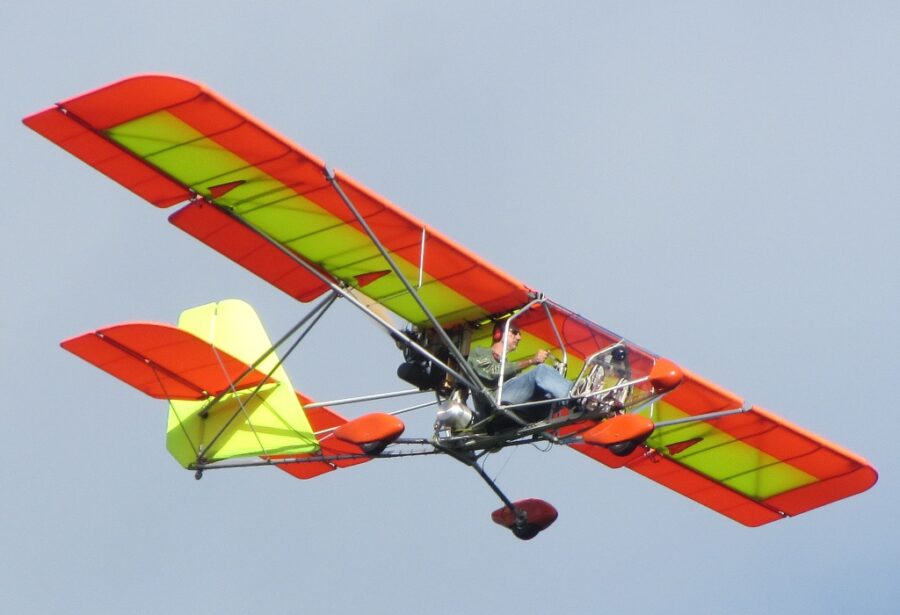

Conclusion
Building your ultralight can be a fun process, and the fulfillment of flying an aircraft put together by your hands is beyond comparison. As an amateur, there are several paths to building your ultralight. But the easiest method is buying a kit developed from a proven design that is unlikely to come apart mid-air. It may cost significantly more than building from scratch, but for the extra money, you get more reliability and less stress during the building process.
Above all, the goal is to enjoy the build as much as you will enjoy the flights.
Safe skies!

























